Gujarati writer Minal Dixit prompts a rethink on the uni-dimensional portrayal of wicked Kaikeyi, asking if demonised women of Indian mythology are only but a perpetuation of patriarchy
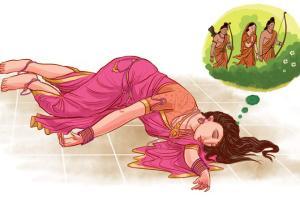
Illustration/Uday Mohite
 Kaikeyi is not a name to be given to a newborn. Like Surpanakha or Putana, other oft-recalled villainous female characters from Indian epics, Kaikeyi is synonymous with discord, greed and trickery.
Kaikeyi is not a name to be given to a newborn. Like Surpanakha or Putana, other oft-recalled villainous female characters from Indian epics, Kaikeyi is synonymous with discord, greed and trickery.
The second queen of King Dashrath exemplifies the conniving strategist who exiled Lord Rama, to protect her son's interests. The package lends itself gorgeously to popular myths, folk tales, television soaps and jokes on the web. Kaikeyi moments in Ramanand Sagar's Bollywood-styled Ramayana float till date in cyberspace; and so, do the memes poking fun at Kaikeyi-like self-seekers, particularly funny is the appropriation of Amitabh Bachchan's dialogues for Kaikeyi intrigue.
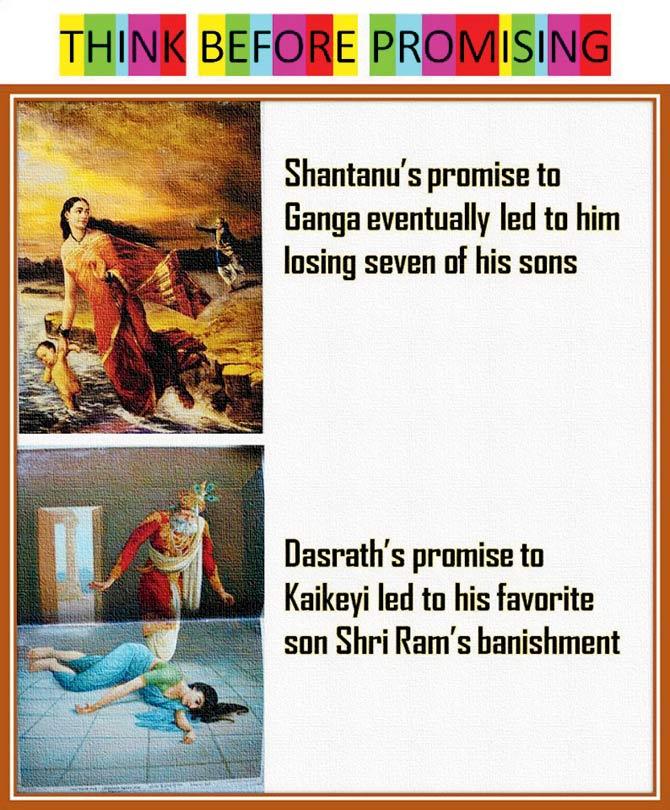
While she occupies a stable slot in the encyclopaedia of wicked women, Mumbai's literary cosmos is currently agog with a rather offbeat sympathetic narrative of the reviled woman. The Hindi book Shapita (RK Publication) written by academic Dr Pragya Shukla, 71, is a translation of the 2018 Gujarati original of the same name by veteran writer Minal Dixit. Shapita, the cursed one, is a sharp incisive dismissal of the unfair patriarchal assessment of Kaikeyi's life. Quoting select shlokas from Valmiki Ramayana, Dixit has demonstrated the protagonist as the wronged and aggrieved party—robbed of mother's love at an early age due to bickering parents, raised by a maid, unfulfilled as a queen, unrewarded despite rare bravery and martial skills, and lastly, deserted by her own thankless son, who saw no merit or rationale in her rebellion.
Dixit has located yet-unexplored shades of grey in Kaikeyi's character, which have not been acknowledged in popular imagination. For instance, Kaikeyi's love for animals or her ability to offer herself as the rocking sex partner (less than half his age) and political advisor to an ageing dependent king.
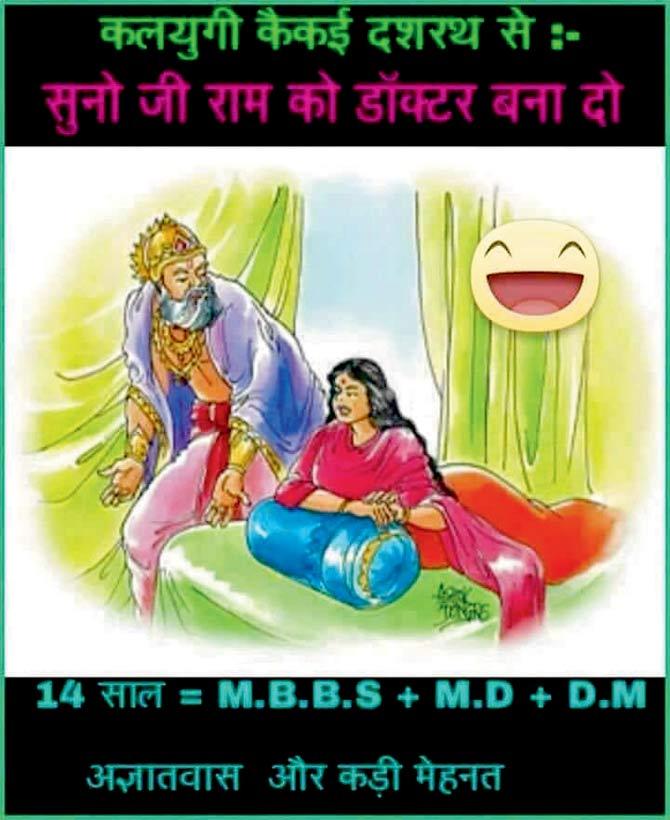
Dixit, for a long time, has placed Kaikeyi at the centre of her investigation of the Raghukul dynamic. Sometime in 1971, when she was the producer helming Gujarati women's programming at All India Radio in Mumbai, she had written a 50-minute soliloquy on Kaikeyi. "At that time, Kaikeyi had begun to seize me; I wanted to share and amplify my connect," Dixit, 88, remembers.
Those were the pre-television days when Bombay loyally followed the AIR beat and listeners wrote letters to the favourite radio announcers. Kaikeyi's ekokti was received warmly as a defining progressive moment in Gujarati radio content. "Our office was flooded with postcards of appreciation for the very idea of giving a platform to Kaikeyi. Native Gujarati speakers told us that they hadn't heard a more straightforward appraisal in their local cultural milieu, that too of a character who is known as the trigger for Ramayana," recalls Durga Bhatt, 77, Dixit's AIR colleague, who shared the enthusiasm of relooking at demonised women.
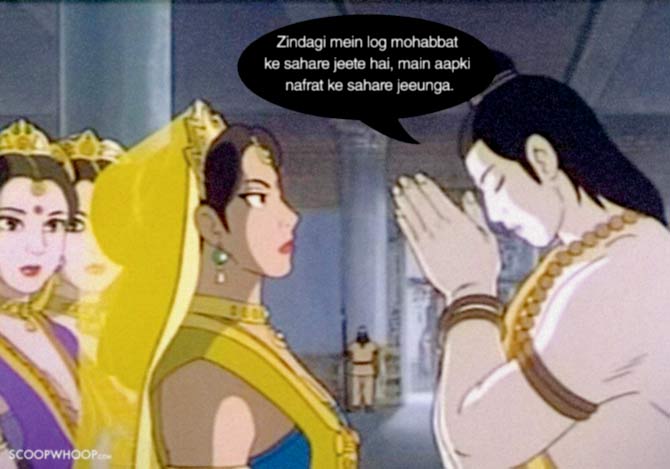
Jokes and memes inspired by Kaikeyi's character continue to flood the Internet
As Dixit got busy with her life in AIR, she rose to the stature of station director in the 1980s and shifted base from Bombay to Rajkot; she finally chose Mumbai as home after retirement in 1989. She has written 10 novels, three short story collections, and a popular newspaper column. Her books, including Shapita, have won state-level awards. However, her work on Kaikeyi took over 50 years to crystallise as a text. "I was fascinated by the fact that an ace charioteer and horse rider like Kaikeyi was unable to drive her own life in the intended direction," ruminates Dixit, who is currently basking in the joy of the Hindi translation of Shapita. When admirers asked about her next venture at the book launch, she added with a chuckle: "There is no energy left now. Kaikeyi should have the last word, I guess." Dixit feels Kaikeyi is underutilised material that new writers can work with because there are few characters who live with eternal posthumous disgrace.
Amusingly, Dixit has also shared, in the foreword, her sense of trepidation while tackling Kaikeyi because her reinterpretation is tantamount to a dissection of King Dashrath and in a way, Lord Rama too. It is easier to blame Kaikeyi for Rama's woes than interrogate the Raghukul patriarchy, male bias and palace intrigue. After telling Kaikeyi's story, Dixit has presented an audit analysis of other women characters in the Ramayana—Sita, Urmila, Mandavi, Kausalya, Sumitra, Mandodari, Shabari and even maid Manthara, who illustrates extreme rare loyalty. She states that none are genuinely happy, and each suffered at the hands of unappreciative men. Their outbursts are coping mechanisms, not behaviour traits.
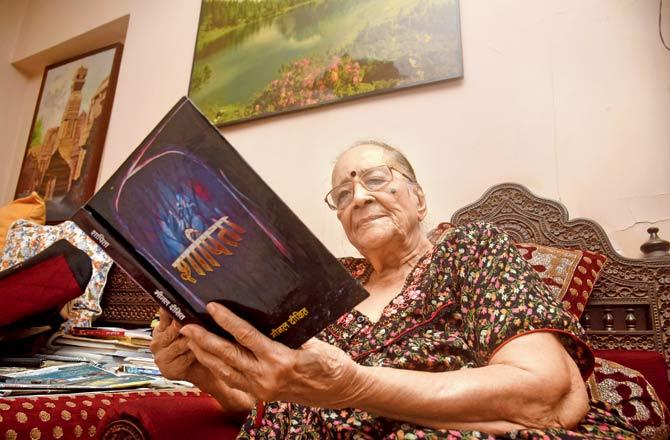
During her AIR days, Minal Dixit, 88, had written a soliloquy on Kaikeyi, that took an alternate view of the character. She did not present Kaikeyi as the woman who birthed the conflict at the centre of Ramayana. Pic/Atul Kamble
Like Shapita, there are a few compassionate depictions of Kaikeyi across Indian languages. Her human shades emerge in Dr AK Ramanujan's Three Hundred Ramayanas: Five Examples and Three Thoughts on Translation, the scholarly essay, which opens doors for varied evaluations of Lord Rama's story, some contradicting the popular version of Goswami Tulsidas' Ramcharitmanas. In popular fiction too, some authors have been kinder to Kaikeyi. Amreeta Sen's (1992) blank verse, Kaikeyi (which she later dramatised) represents the flawed female as a mere vulnerable empress who had reasons for furthering her son's inheritance claim. Sen's work inspired an Italian author, Rosalba Griesi, to write a dissertation on Kaikeyi's universal appeal. In the Marathi literary world, the 1977 musical Dhadila Ram Tine Ka Vani veered towards a positive image of Kaikeyi. Playwright DG Godse defended Kaikeyi's actions as part of a supposedly secret benevolent plan to send Rama to the forest for decimating evil. In this series of recast Kaikeyi tales falls, Suresh Kala's Kaikeyi, The Mother of a God.
Dixit's Kaikeyi gets the credit for bringing Hindi and Gujarati literary traditions closer, especially at a time when women are rewriting alternative narratives, while leading social initiatives and gender justice battles. Dixit holds a law degree and was a practising lawyer in Surat before joining AIR. She has therefore, proved to be a senior counsel for Kaikeyi. Interestingly, Dixit's book, Kayda Na Fayda focuses on legal aid for women. It is the kind of stuff women like Kaikeyi read while reminding their husbands of unfulfilled commitments and raghukul reet.
Sumedha Raikar-Mhatre is a culture columnist in search of the sub-text. You can reach her at sumedha.raikar@mid-day.com
Catch up on all the latest Crime, National, International and Hatke news here. Also download the new mid-day Android and iOS apps to get latest updates
 Subscribe today by clicking the link and stay updated with the latest news!" Click here!
Subscribe today by clicking the link and stay updated with the latest news!" Click here!







